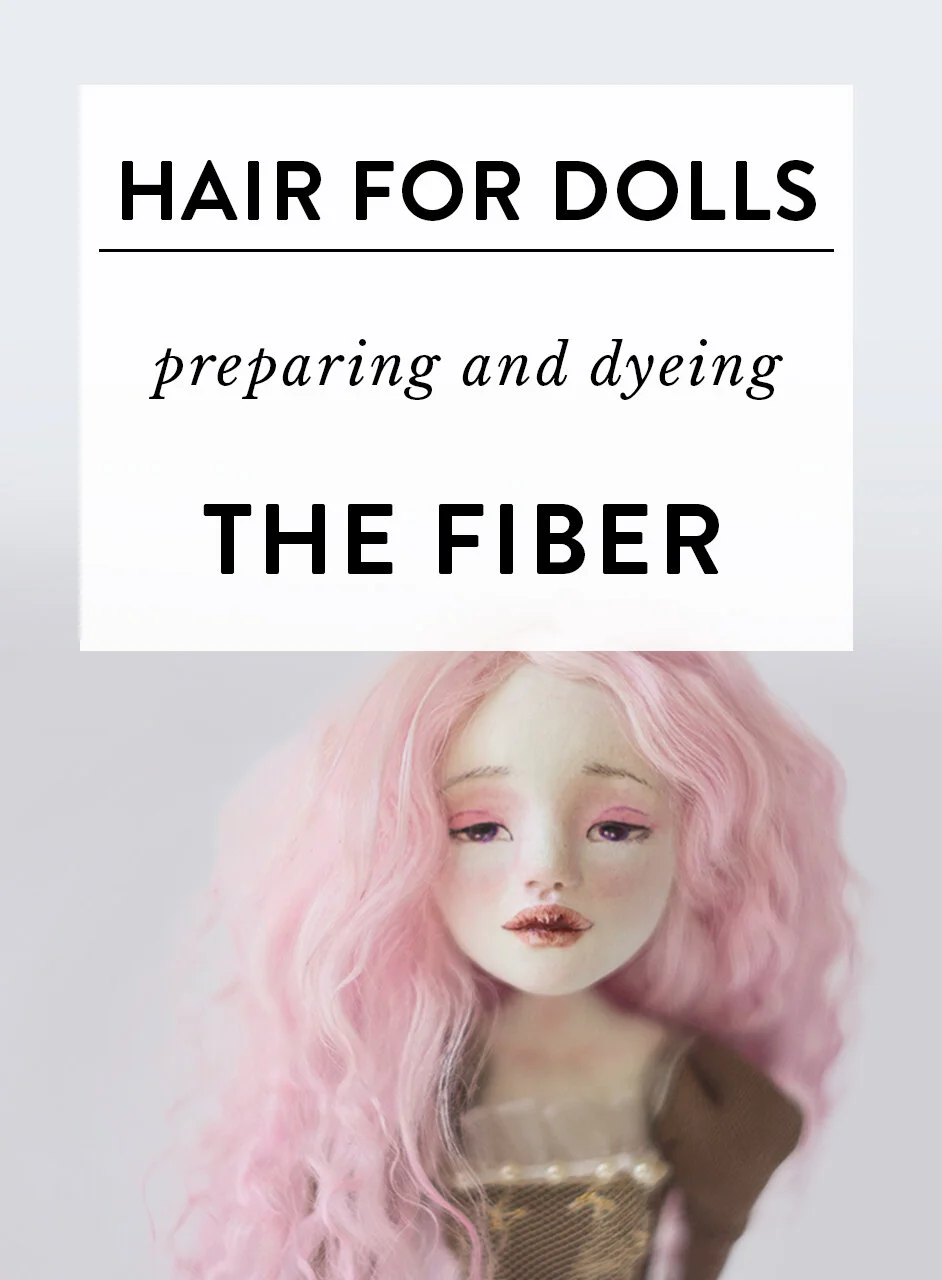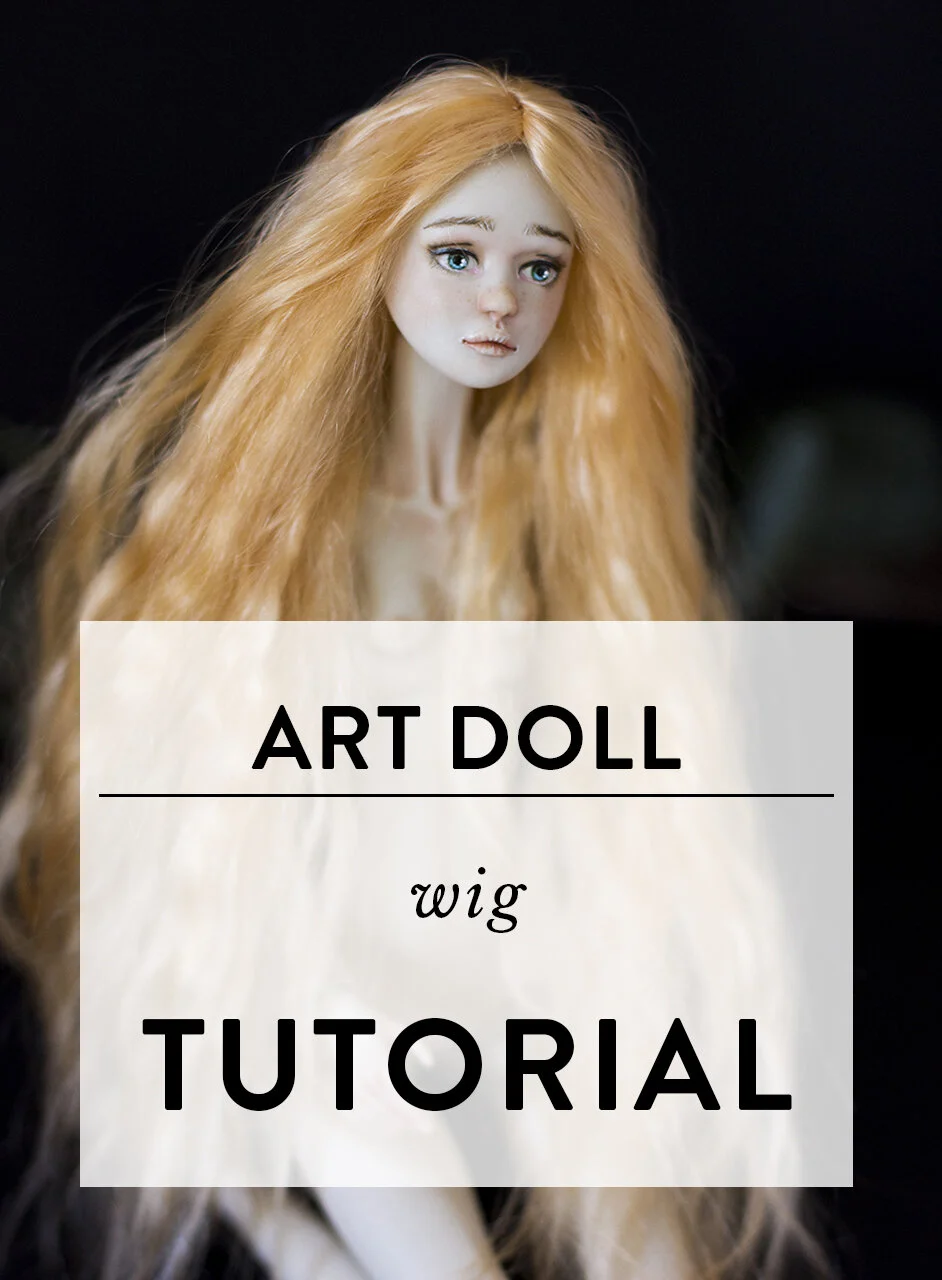Wig making for dolls: preparing and dyeing the fiber
After sculpting and painting the doll, most of us, doll makers, proceed to attach the hair and create intricate hairstyles for our dolls. I’ve already covered how to create a simple wig for your doll, so today I want to explore different options of fiber and how to prepare it for wig making.
This post contains affiliate links and I will be compensated if you make a purchase after clicking on my links. I wouldn’t promote anything I don’t absolutely love!
What fiber to choose?
There are loads of different fiber that can become hair for dolls. From yarn to synthetic hair. My favorite options are natural goat mohair and Suri alpaca fiber. Both of them are very similar, but I tend to use goat mohair more often. The hair is very fine, silky and smooth - perfect for luxurious doll wigs.
What do you need to know before purchasing mohair or alpaca fiber?
Read the descriptions very carefully! Some of the fiber is sold already washed and combed, others might be raw, meaning, just sheared from the goats or alpacas and not treated in any other way. Washed and combed locks will be more expensive than raw fiber but will require less work on your part. I strongly advise purchasing all the fibers from small, family-owned farms. This way you’ll know that the animals are not being harmed in the shearing process and taken care of properly!
You have the fiber, what’s next?
I usually purchase unwashed fiber, just because I like to control the process and dye the hair afterwards. So, the first step for this kind of fiber is washing it with shampoo thoroughly. Divide the hair into smaller locks, it’ll be easier to handle it.
It takes a few washes to get all the dirt out. If you’ve purchased washed locks of hair, check if the seller did a good job washing it. Sometimes you might find small grass particles tangled in the hair or the smell of goats and alpacas still lingering on. If that’s the case, wash it one more time.
While the hair is still wet, comb it thoroughly. If you have raw fiber, a lot of the undercoat will come out while combing and you’ll be left with very smooth and silky hair. The layer of underfur is what keeps the animal warm. Usually, it’s a shorter layer of hair that is more coarse and fluffy. When purchasing raw fiber - have in mind - a lot of it is that fluffy undercoat, which is not very suitable for wig making.
When the locks are clean and combed, leave them to fully dry.
Dyeing mohair and alpaca fiber
You can use all the products that you’d usually use for human hair. Wash it with shampoo and dye with hair dye. For one of my upcoming projects, I need very pale, mint blue hair. For that, I’m using a blue hair dye combined with loads of conditioner. Diluting hair dye with conditioner helps to achieve a beautiful pastel color.
Apply the mixture with a brush and massage it into the hair. Wait for 30-40 minutes and wash it again. For styling natural fibers, like mohair or alpaca, you can use heat as well. It’s naturally a little bit curly, so if you want to straighten it, the hair straightener works wonders!
I hope you’ll find this information helpful. Check out the wig making tutorial and consider joining my doll making online classes for more content about this intricate form of art.
How to make a wig for a doll?
A hairstyle, that your doll wears, is such an important element shaping the whole character of a doll. It's even more fun if you could change the hair depending on the doll's costume or your mood! In either case, the big questions remain. How to attach doll hair? And how to make a wig for a doll? So now I’ll take you through the steps of making this fancy looking but rather simple wig.











